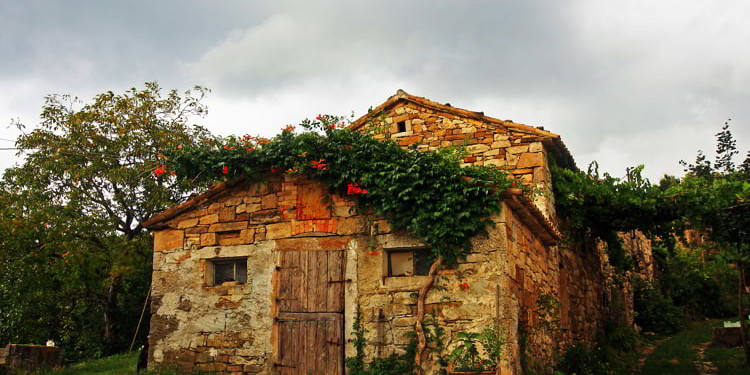I started to think of expert tips for renovating rental property overseas, in advance of the purchase of the property known as Lahardan House, the 200-year-old Georgian manor home we bought years ago to become our residence in Waterford, Ireland, we tried to have the place inspected.
This isn’t obligatory in Ireland. The bank, to lend for the purchase of a piece of real estate, will require you to test for lead and asbestos, but they won’t call for an overall inspection of the kind we Americans take for granted when buying a house in the States.
Even though no one was telling us to arrange for a formal inspection, we wanted one and asked around for the name of an inspector.
The report from the guy we engaged was a dozen pages of general commentary related to his impressions of the place. “The living and dining rooms would benefit from re-decoration,” he noted. And: “The gardens might be cut back.”
As we found ourselves doing often those early days in Waterford, reading this inspector’s report, we looked at each other, shook our heads, and moved on.
So much about life in Ireland befuddled us that we had no choice but to ignore what we didn’t understand.
Life In Renovation Lane
We closed on the purchase of Lahardan House, having, it turned out, no idea what we were buying.
Property acquired, we needed someone to help with the work we wanted to carry out in advance of moving in. One of our new staff, a young Irish girl named Deidre, recommended a contractor named Noel. I called Noel and made an appointment to meet him at the house.
The chilly, drizzly morning that Noel and I met, I followed the tall, lanky, red-headed Irishman from room to room, upstairs, down the hall, back down to the living room, then again across to the kitchen, where Noel turned, finally, and explained, “I’d say there’s a bit of damp.”
“Yes, it’s very damp here, isn’t it?” I said.
“No. You have damp.”
“Ah.”
“I know a damp guy. I can call him for you if you like.”
“OK, that would be great.”
Our Irish Adventure In Renovation
A few days later, on another chilly, misty Irish morning, I stood inside Lahardan House’s big red Georgian front door, waiting for the damp guy.
When I heard the car pull up on the gravel out front, I walked out and watched as the small, bent-over Irishman got out of his little mud-splattered car and made his way toward me.
He reached the portico and paused to scrape his mud-caked boots on the slate tiles, then looked up at me, tipped his woolen cap, and asked:
“Is himself inside?”
“Himself?”
The little bent Irishman mumbled something in the direction of the slate porch tiles that I couldn’t decipher then continued on through the heavy door into the entryway of the house and from there, without pausing, on into the living room. I followed.
“Himself isn’t at home?”
“You mean my husband? No, he’s at work…”
Before I could finish explaining Lief’s absence, the little Irishman pulled a screwdriver from the back pocket of his pants and began poking it into things.
He pushed it into every piece of wood he passed, starting with the window casings, then the shutters, the skirting boards at the bases of the walls, the frames of the French doors to the side patio, the floor boards…
Start Your New Life Today, Overseas
With every poke, his look grew more grave.
After he’d finished in the living room, he continued on, poking as he went, through the dining room, the breakfast room, the kitchen. Then back to the entry hall and up the stairs, poking every step as he climbed.
On the second floor, he started all over again, poking his way through each of the five bedrooms, each of the three bathrooms, and all up and down the hallways that connected them.
Finally: “Rising damp,” the little Irishman declared solemnly. “All throughout.”
“Rising damp? What… uh… how… what should we do?” I stammered.
“Got to treat it,” he said as he walked back down the stairs and toward the big red front door. As I watched him drive away, I felt a surge of panic. I was sure I needed help though I didn’t quite understand why. I picked up my cell phone to call Noel.
Rising damp, Noel explained, is a common phenomenon throughout the Emerald Isle. Damp from the constantly wet soil seeps into the foundation of a house and infiltrates the walls. Left untreated, damp will rise, Noel told me, about six feet before gravity halts its progress.
In our house, the damp evidently had been left untreated for a very long time. Once I understood how to recognize the signs, I could see that every wall on the ground floor was affected.
In addition to rising damp, we had rot, both wet and dry. We had mold and fungus, too, in every hidden and covered corner and crevice.
This realization turned our simple new home make-over into an all-out renovation that saw our Georgian acquisition reduced, over months, to a near-shell before the internal restoration work could begin. It would be 18 months before the pieces of Lahardan House would be reassembled.
Renovating Rental Property Overseas
In the two-and-a-half decades since that first overseas renovation adventure in Waterford, I’ve restored a 200-year-old Spanish-colonial building in Caso Viejo, Panama… and a newer commercial building in Panama City that now serves as our Live And Invest Overseas HQ.
In addition, Lief and I have refurbished three apartments in Buenos Aires… four apartments in Paris, including the Montmartre digs whence I write today… a rental property in Medellín, Colombia… and a house and an apartment building in the States.
In all, Lief and I have renovated 13 properties in 6 countries. These experiences, charming in memory but often something else at the time, are on my mind as we undertake a next project.
This year we’re finally restoring the 150-year-old farmhouse we purchased a decade-and-a-half ago on a mountainside in Istria, Croatia.
As we embark on this 14th renovation, I’m reminding myself of lessons learned.
If you’re also infatuated with the idea of rehabbing the home of your dreams overseas, you might find them helpful, too…
Here are some expert tips on renovating rental property overseas:
Expert Tip #1: All renovation projects take twice as long and cost twice as much as you plan.
We’ve not yet taken the step of allowing for this by doubling our time and expense projections from the outset. We worry that, if we did, the inflated figures would still fall short of the ultimate actual figures by half.
Expert Tip #2: Everyone involved must agree on the objective from the start.
Is the completed property intended for rental or for personal use? Often the answer can be both, which is when things can get messy when renovating rental property overseas.
Our Medellín project stands out in this regard. We renovated that apartment so personally that we were reluctant to rent it out. Fit a place out with custom parquet, hand-painted tiles, a clawfoot tub, and antique chandeliers and you become discriminating about who you feel comfortable allowing to spend the night.
We set the rental rates so high that we priced ourselves out of the market. Finally, we pulled the listing from the third agency and hired a property manager to take care of cleaning and paying the bills. It was no longer a cash-flowing asset but a straight-up expense.
You could call it a rental investment disaster story. On the other hand, the apartment is now worth five times what we paid for it. It generates no rental cash flow, but we use the property for family vacations at least once a year. I’m happy with the situation; Lief less so.
This property is perhaps our best example of what we’ve come to refer to as “The Spousal Effect.” Lief’s spreadsheeted rental projections were out the window when I took charge of the project. What short-term tourist rental renovation budget includes custom cabinetry and leather Chesterfield sofas?
Expert Tip #3: A renovation adventure is one of the best ways we’ve found to engage with the local community.
In Ireland, France, Panama, Colombia, Argentina, and Portugal, the places where we’ve taken on renovation projects, the architects, contractors, woodworkers, painters, and landscape designers we’ve worked with have become personal friends and have been our entrée to the local scene, giving us insights into the local culture we wouldn’t have had otherwise.
Expert Tip #4: It’s possible to renovate a property in a country where you’re not living but risky.
Only one of our renovation projects—Lahardan House in Ireland—was undertaken in the place we called home. All the others have been managed long distance.
The three renovations of apartments in Buenos Aires, Argentina, were handled completely by an architect contact. We didn’t see the apartments until a year after the work had been completed because they were rented on annual leases, but the architect sent pictures on a weekly basis to update us on progress.
Material selections and furniture choices were agreed via email. The process was seamless, but I wouldn’t recommend it. It’s part of the challenges when you’re renovating rental property overseas.
Ideally, you should plan to visit the project at least monthly during the renovation process. At critical stages, you may need to be present weekly or daily. In conclusion, if you’re not living where the property is located, add travel costs to your budget.
Until next time,

Kathleen Peddicord
Founding Publisher, Overseas Opportunity Letter










